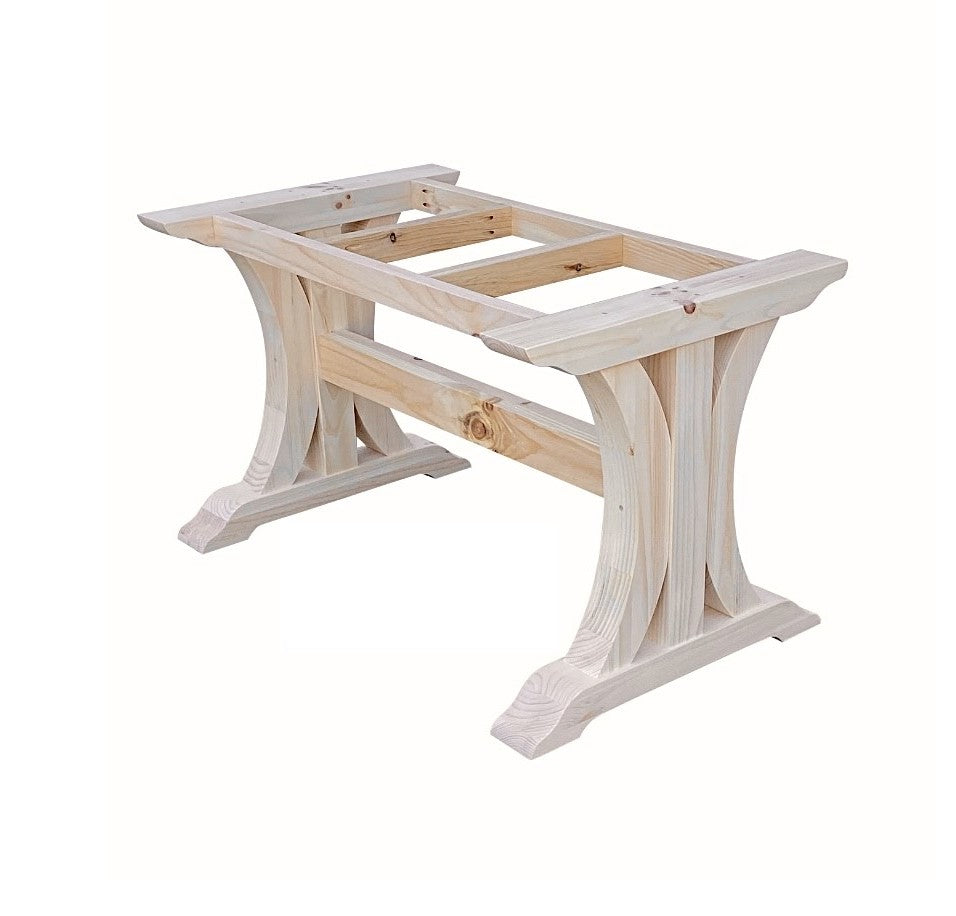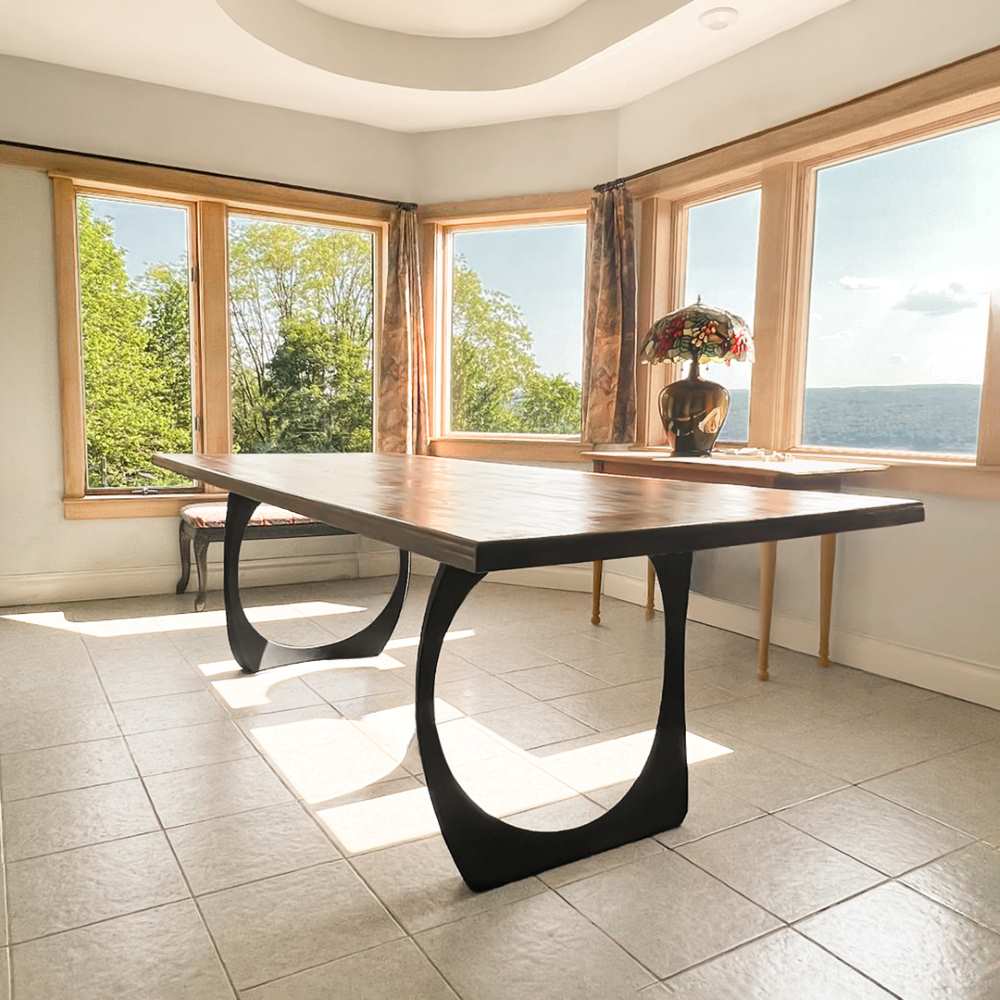From Conventional to Modern: Find the Perfect Dining-room Table Legs for Your Design
While timeless layouts such as cabriole and transformed legs evoke a feeling of ageless refinement, modern styles like barrette and geometric alternatives provide an opportunity for striking visual rate of interest. As you take into consideration these elements, the inquiry continues to be: just how can you effortlessly integrate these varied leg styles to produce a harmonious eating experience?
Recognizing Table Leg Styles
The range of dining-room table leg designs can significantly affect both the visual appeals and functionality of the space. Each leg design adds special sensible functions and visual elements, satisfying varied design choices and usage demands. Comprehending these designs is critical for selecting the appropriate table that aligns with your overall indoor style vision.
As an example, conical legs offer a clean, classic look that can improve a space's style, while pedestal bases offer security and take full advantage of legroom, making them suitable for smaller sized rooms. Barrette legs, a characteristic of mid-century contemporary style, present an industrial flair, enabling a ventilated, open feeling. Likewise, trestle legs stimulate rustic beauty, offering durable support and a feeling of eternity.
Wood legs can bring heat and texture, whereas metal alternatives often convey a smooth, modern vibe. Inevitably, recognizing table leg styles is important for producing a cohesive eating area that reflects individual style while ensuring usefulness and comfort.
Standard Table Leg Options
When picking dining area table legs, standard alternatives often symbolize classic beauty and craftsmanship. These layouts reflect an abundant heritage and a commitment to high quality, making them suitable for those that value classic visual appeals.
Among the most legendary standard leg designs is the cabriole leg, characterized by its elegant curved shape. This design often features decorative makings and is most frequently found in Queen Anne and Chippendale furniture. An additional prominent choice is the transformed leg, which flaunts a series of smooth, rounded shapes that supply a traditional look while preserving stability.
Additionally, the straight leg, while straightforward, uses a sturdy and unadorned framework that can blend seamlessly with a variety of tabletop styles. For those drawn to ornate outlining, claw-and-ball feet legs stimulate a feeling of magnificence and can act as a stunning focal factor in any kind of dining area.
Finally, pedestal bases, although not strictly legs, provide an alternate conventional option that enables adequate legroom and can be magnificently carved. Each of these traditional leg designs adds to the overall setting of a dining-room, marrying function with aesthetic charm.

Modern Table Leg Layouts
Modern table leg styles provide a diverse variety of styles that highlight tidy lines and cutting-edge materials. These designs commonly focus on functionality while working as striking centerpieces within a dining area. Minimal aesthetic appeals prevail, with legs crafted from materials such as steel, glass, and crafted wood, which add to a ventilated and modern feel.
One look at this web-site preferred design is the barrette leg, identified by its slim, tapered structure that supplies security without overwhelming the tabletop (dining room table legs). This design is usually found in mid-century modern-day furnishings and can easily complement various eating table shapes. An additional pattern is making use of geometric shapes, where legs might take on asymmetrical or angular types, adding visual passion and a touch of artistry

Blending Designs for Special Areas
Frequently, house owners look for to produce special eating rooms that show their individual style by blending various design components. This approach allows for the incorporation of diverse aesthetic appeals, leading to an unified yet distinct setting. Pairing a rustic wooden table with sleek, contemporary steel legs can produce a distinctive comparison that elevates the space's overall charm.
Furthermore, integrating vintage table legs with contemporary tabletops can evoke a feeling of history while preserving a modern sensibility. Such combinations not just display individual taste yet also motivate creative thinking, permitting home owners to curate a room that really feels both personal and inviting.
Color plays a crucial role in this mixing process; choosing table legs that match or comparison with the existing color pattern can boost visual interest. Whitewashed legs can soften the daring of a dark table surface, producing a balanced aesthetic.
Tips for Selecting the Right Legs
Picking the right table legs is necessary for achieving both functionality and visual charm in your dining room. Begin by thinking about the general style of your room. Traditional settings take advantage of legs that feature detailed carvings or transformed layouts, while contemporary look these up rooms may ask for sleek, minimalist designs.
Next, examine the elevation and stability of the legs. dining room table legs. Typical table range between 28 to 30 inches in height, so make sure the legs enhance this dimension for convenience. Additionally, robust materials, such as wood or steel, can boost security and longevity
Review the leg shape too-- alternatives consist of directly, tapered, or pedestal designs. Straight legs provide a classic look, while tapered legs can include a touch of beauty. Pedestal bases provide enough legroom and are optimal for smaller sized areas.
Final Thought
In recap, selecting the ideal dining-room table legs calls for careful consideration of both typical and contemporary styles. Standard right here options such as cabriole and turned legs supply timeless style, while modern styles like hairpin and geometric shapes offer a modern touch. By harmonizing leg style, height, and product with the overall decoration, a cohesive and inviting ambience can be accomplished. Eventually, the picked table legs must mirror the preferred visual, improving the eating experience within the room.
The range of eating space table leg designs can considerably affect both the visual appeals and functionality of the room. Eventually, understanding table leg designs is important for developing a natural eating area that reflects individual style while ensuring practicality and convenience.One of the most legendary conventional leg designs is the cabriole leg, defined by its elegant curved shape. Straight legs offer a classic look, while tapered legs can include a touch of beauty.In recap, selecting the ideal eating space table legs requires cautious consideration of both contemporary and traditional styles.